
Levi Davis: Missing rugby player's family say they live in hope
Levi Davis' mum says she "prays he will turn up one day" as she marks a year since his disappearance.
1970-01-01 08:00
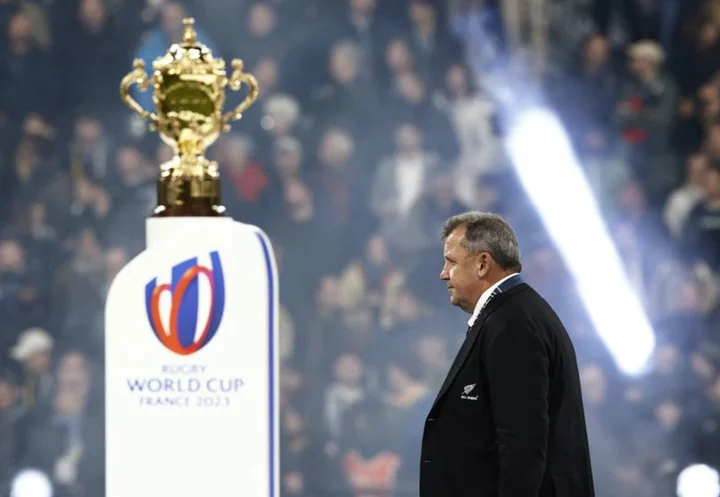
Rugby-New Zealand's Foster era ends with a close one that got away
By Nick Mulvenney PARIS New Zealand arrived at the Rugby World Cup in the unusual position of not
1970-01-01 08:00
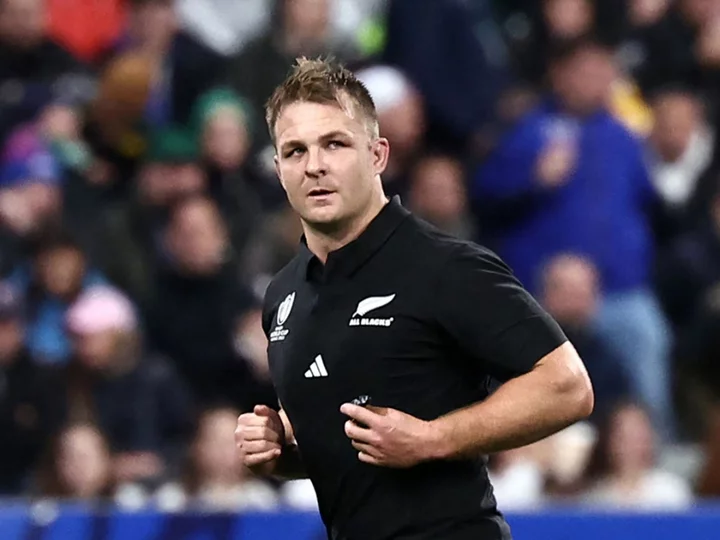
Sam Cane red card: Why was New Zealand captain sent off against South Africa in Rugby World Cup final?
Sam Cane became the first player to be sent off in a men’s Rugby World Cup final after seeing his yellow card upgraded to a red following a review from the TMO bunker during the New Zealand v South Africa match in the Rugby World Cup final. In the first half of the Stade de France showpiece, the All Blacks captain’s shoulder connected with the head of Jesse Kriel. Referee Wayne Barnes initially sent the captain to the sin-bin but, using the bunker system, that was upgraded to a red card soon after. The foul play review officer ruled that it was a shoulder direct to head with significant force and not enough mitigation to remain a yellow card. After the review was complete, Barnes called over stand-in skipper Ardie Savea to deliver the bad news for the All Blacks. He responded in shock: "to red!?" Cane was then seen in agony after learning his fate on the touchline, closing his eyes and rocking back on his chair. Reacting to the decision at half-time, Ireland legend Brian O'Driscoll was adamant Cane deserved the red card, telling ITV Sport: "Any effective tackle is a hinge at the hips, Sam Cane can have no complaints, there's no late dip, he has a clear line of sight, it's considerable force to the head and a very, very clear red card." While All Blacks legend Sean Fitzpatrick reluctantly agreed: "In real time, it's a red card, we have to get on with it." But what are the laws around head contact and high tackles that referees are following and how do they decide on the punishment? Here’s everything you need to know: What are World Rugby’s laws on head contact? Head-on-head contact in the tackle comes under Law 9 of the Laws of Rugby Union, which covers foul play. Law 9.11 dictates “Players must not do anything that is reckless or dangerous to others, including leading with the elbow or forearm, or jumping into, or over, a tackler” and Law 9.13 goes on to say “A player must not tackle an opponent early, late or dangerously. Dangerous tackling includes, but is not limited to, tackling or attempting to tackle an opponent above the line of the shoulders even if the tackle starts below the line of the shoulders.” If a player breaks these laws and the act is deemed to be reckless or dangerous, then the referee is entitled to issue a yellow or red card. World Rugby also clarify the intent of the laws, stating in their guidelines that: “ Player welfare drives World Rugby’s decision making for zero tolerance of foul play, especially where head contact occurs. The focus must be on the actions of those involved, not the injury – the need for an HIA [a Head Injury Assessment] does not necessarily mean that there has been illegal head contact.” What are the punishments for head-on-head contact? Ok, this is where things get technical and debates start to occur. In March 2023, World Rugby issued their latest ‘head contact process law application guidelines’ to guide referees on whether foul play has occurred and how it should be punished. The referee has to go through a four-step process (detailed below) to determine the extent of the foul play and the sanction. The four steps are: Has head contact occurred? Was there any foul play? What was the degree of danger? Is there any mitigation? Step 1 (has head contact occurred?) is relatively straightforward, with head contact including the head and the face as well as the neck and throat area. If any head contact is made at all, we move on to Step 2. Step 2 (was there foul play?) is a touch more complex. The referees are told to consider whether the head contact was either intentional, reckless or avoidable – e.g. the defender is always upright. If it was, the tackler will be penalised and they move on to Step 3. However, if the head contact was deemed not to be foul play, the game continues. Step 3 (what was the degree of danger?) – judged from high to low – determines the initial punishment. A degree of high danger is judged on any of: direct contact rather than indirect, a high-force impact, a lack of control from the tackler, the incident occurring at high speed, the tackler leading with the head/shoulder/elbow/forearm or the tackle being reckless. If the referee judges there to be a high degree of danger, a red card will be shown. Meanwhile, low danger is judged as indirect contact, low force, low speed or no leading head/shoulder/forearm/swinging arm and a yellow card or even just a penalty to the opposition may be awarded. The final step, Step 4 (is there any mitigation?) determines whether the punishment can be reduced by one grade (i.e red card down to yellow card or yellow card down to just a penalty). Mitigation includes a sudden or significant drop in height or change in direction from ball carrier, a late change in dynamics due to another player in the contact area, a clear effort from the tackler to reduce their height or the tackler having no time to adjust. However, mitigation will never apply for intentional or always-illegal acts of foul play. What about the Foul Play Review Officer/Bunker review? Introduced for this World Cup was the Bunker review system. This allows the referee to issue a yellow card to a player, sending them to the sin-bin while play goes on, where a Foul Play Review Official (FPRO) will then take another look at the incident and determine if the yellow card should be upgraded to red, allowing the game to continue rather than a long stoppage to debate this. This is what happened to Curry against Argentina. The referee crosses their arms to indicate a Bunker review will take place. Once a player is in the sin-bin, the FPRO has up to eight minutes to review the decision and decide if it warrants upgrading to a red card. If not, the player will return to the field after their 10 minutes in the sin-bin has elapsed. Read More South Africa become kings of rugby with dramatic World Cup win over greatest rivals Sam Cane, Siya Kolisi and a tale of two captains at the heart of this Rugby World Cup final New Zealand captain Sam Cane opens up on Rugby World Cup ‘heartbreak’ after red card in final New Zealand v South Africa LIVE: Rugby World Cup final score updates as Springboks lead 14-man All Blacks South Africa’s Bongi Mbonambi suffers Rugby World Cup final heartbreak with injury South Africa vs New Zealand: Who is the referee for the Rugby World Cup final?
1970-01-01 08:00

Rugby-New Zealand out to avoid repeat of 2019 in semi-final week
By Nick Mulvenney PARIS The All Blacks are desperate to avoid any repeat of their disappointing 2019 experience
1970-01-01 08:00
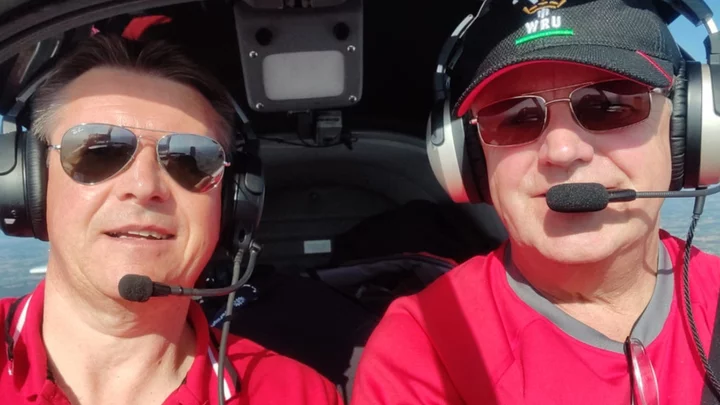
Rugby World Cup: The quirky ways Wales fans are travelling to France
From flying in a plane that weighs less than Wales' scrum to cycling more than 1,600 miles.
1970-01-01 08:00
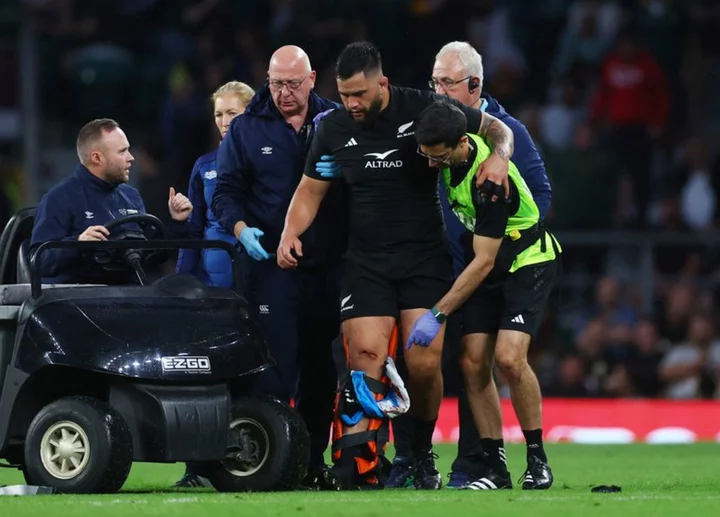
Rugby-All Blacks waiting on Lomax as 'monster game' looms
By Julien Pretot LYON, France Tyrel Lomax's return to action was cut short on Thursday as New Zealand's
1970-01-01 08:00
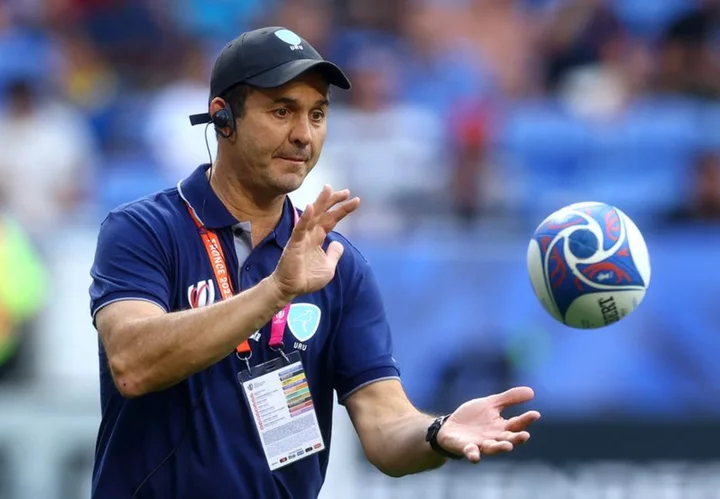
Rugby-Uruguay promise All Blacks a fight in dream World Cup finale
By Nick Mulvenney LYON, France (Reuters) -Uruguay captain Andres Vilaseca said facing New Zealand in the final match of their
1970-01-01 08:00
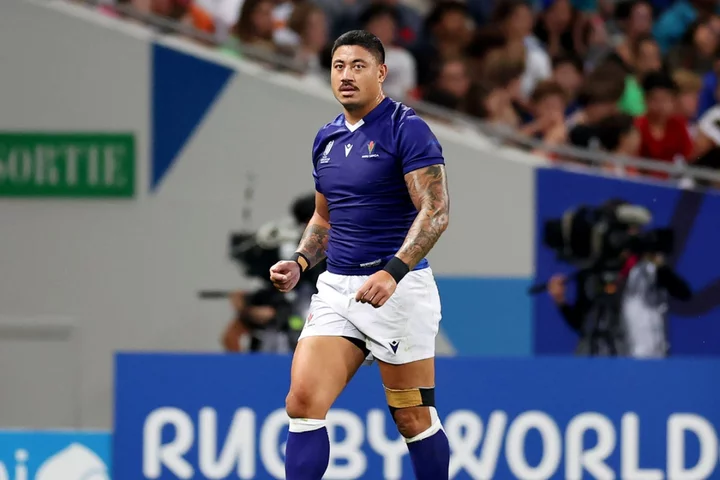
Ben Lam red card: Why was Samoa star sent off against Japan at Rugby World Cup?
Ben Lam became the latest player to see a yellow card upgraded to a red following a review from the TMO bunker during the Japan vs Samoa match at the Rugby World Cup. In the second half of the Pool D contest, Samoan winger Lam’s shoulder connected with the head of Japan back row Lappies Labuschagne while making a tackle, who went off for a HIA. Referee Jaco Peyper initially sent the flyer to the sin-bin but, using the bunker system, that was upgraded to a red card soon after, with the foul play review officer ruling that it was a shoulder direct to head with significant force and not enough mitigation to remain a yellow card. Lam’s dismissal was the seventh red card of the World Cup and is one of a number of disciplinary incidents which have shone a light on the consistency of officiating in this tournament. Arguably the most high-profile moment came on the opening weekend when an England player was shown a red card for the fourth time this year, as Tom Curry was sent off early in his side’s win over Argentina, following a head-on-head collision with Juan Cruz Mallia. However, apparent inconsistency among officials irked many, especially on social media, with other incidents of head contact across the opening weekend not being punished as severely. Later in that same match, Santiago Carreras only received a yellow card despite his leap in attempting to charge down a George Ford kick seeing his hip make contact with the England No 10’s head. During South Africa’s impressive 18-3 win over Scotland, Jesse Kriel’s tackle on Jack Dempsey in which his head clattered into that of his Scottish opponent wasn’t even reviewed by the TMO and wasn’t subsequently cited, while Chile captain Martin Sigren was only sin-binned despite a head-on-head collision while tackling a Japanese attacker. In the second round of action, New Zealand’s Ethan de Groot was sent off for his high hit during the clash with Namibia. But what are the laws around head contact and high tackles that referees are following and how do they decide on the punishment? Here’s everything you need to know: What are World Rugby’s laws on head contact? Head-on-head contact in the tackle comes under Law 9 of the Laws of Rugby Union, which covers foul play. Law 9.11 dictates “Players must not do anything that is reckless or dangerous to others, including leading with the elbow or forearm, or jumping into, or over, a tackler” and Law 9.13 goes on to say “A player must not tackle an opponent early, late or dangerously. Dangerous tackling includes, but is not limited to, tackling or attempting to tackle an opponent above the line of the shoulders even if the tackle starts below the line of the shoulders.” If a player breaks these laws and the act is deemed to be reckless or dangerous, then the referee is entitled to issue a yellow or red card. World Rugby also clarify the intent of the laws, stating in their guidelines that: “ Player welfare drives World Rugby’s decision making for zero tolerance of foul play, especially where head contact occurs. The focus must be on the actions of those involved, not the injury – the need for an HIA [a Head Injury Assessment] does not necessarily mean that there has been illegal head contact.” What are the punishments for head-on-head contact? Ok, this is where things get technical and debates start to occur. In March 2023, World Rugby issued their latest ‘head contact process law application guidelines’ to guide referees on whether foul play has occurred and how it should be punished. The referee has to go through a four-step process (detailed below) to determine the extent of the foul play and the sanction. The four steps are: Has head contact occurred? Was there any foul play? What was the degree of danger? Is there any mitigation? Step 1 (has head contact occurred?) is relatively straightforward, with head contact including the head and the face as well as the neck and throat area. If any head contact is made at all, we move on to Step 2. Step 2 (was there foul play?) is a touch more complex. The referees are told to consider whether the head contact was either intentional, reckless or avoidable – e.g. the defender is always upright. If it was, the tackler will be penalised and they move on to Step 3. However, if the head contact was deemed not to be foul play, the game continues. Step 3 (what was the degree of danger?) – judged from high to low – determines the initial punishment. A degree of high danger is judged on any of: direct contact rather than indirect, a high-force impact, a lack of control from the tackler, the incident occurring at high speed, the tackler leading with the head/shoulder/elbow/forearm or the tackle being reckless. If the referee judges there to be a high degree of danger, a red card will be shown. Meanwhile, low danger is judged as indirect contact, low force, low speed or no leading head/shoulder/forearm/swinging arm and a yellow card or even just a penalty to the opposition may be awarded. The final step, Step 4 (is there any mitigation?) determines whether the punishment can be reduced by one grade (i.e red card down to yellow card or yellow card down to just a penalty). Mitigation includes a sudden or significant drop in height or change in direction from ball carrier, a late change in dynamics due to another player in the contact area, a clear effort from the tackler to reduce their height or the tackler having no time to adjust. However, mitigation will never apply for intentional or always-illegal acts of foul play. What about the Foul Play Review Officer/Bunker review? Introduced for this World Cup was the Bunker review system. This allows the referee to issue a yellow card to a player, sending them to the sin-bin while play goes on, where a Foul Play Review Official (FPRO) will then take another look at the incident and determine if the yellow card should be upgraded to red, allowing the game to continue rather than a long stoppage to debate this. This is what happened to Curry against Argentina. The referee crosses their arms to indicate a Bunker review will take place. Once a player is in the sin-bin, the FPRO has up to eight minutes to review the decision and decide if it warrants upgrading to a red card. If not, the player will return to the field after their 10 minutes in the sin-bin has elapsed. Read More Steve Borthwick questions World Rugby’s silence on red card inconsistency Ethan De Groot red card: Why was All Blacks star sent off at Rugby World Cup? ‘Ruining this World Cup’: TV presenter slams ‘grotesque’ refereeing as Wales beat Fiji Japan v Samoa LIVE: Rugby World Cup 2023 latest updates Scotland make sweeping changes for must-win Romania clash Australia coach says Wallabies can’t handle pressure as Rugby World Cup exit looms
1970-01-01 08:00
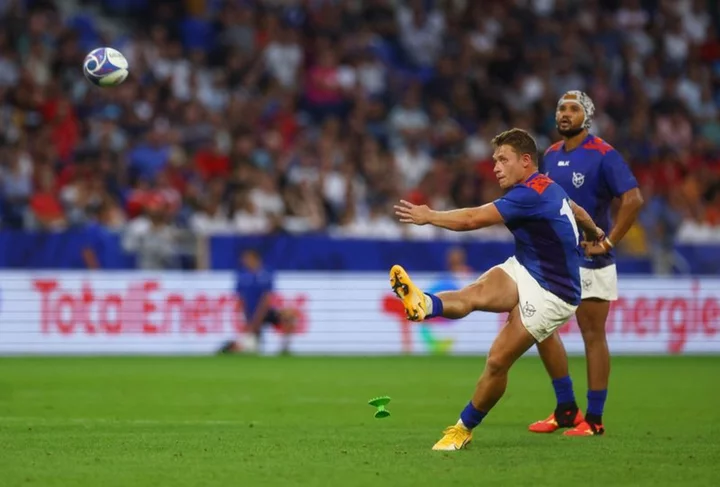
Rugby-Namibia coach calls for change to avoid history repeating itself
LYON, France Namibia’s hopes of a first ever Rugby World Cup win ended in yet another defeat as
1970-01-01 08:00
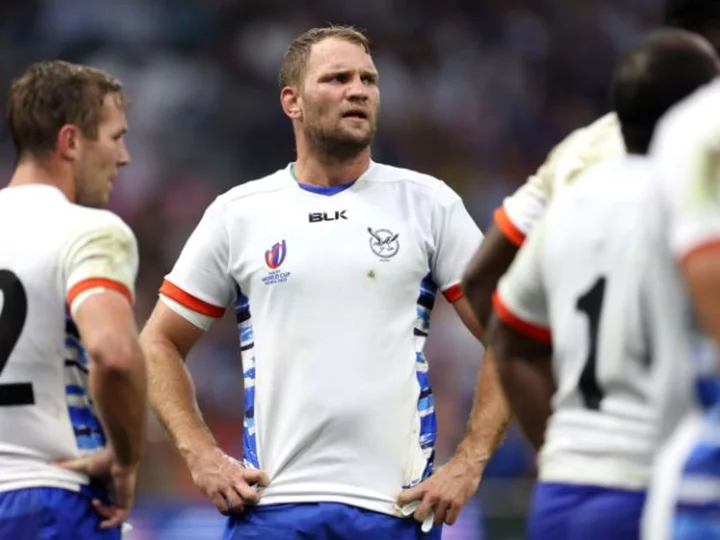
Namibian rugby star Johan Retief out of World Cup after being 'bitten by a spider'
Namibian rugby star Johan Retief has been ruled out of his country's final World Cup game against Uruguay later Wednesday, after being "bitten by a spider" at the team's hotel in Aix-les-Bains, eastern France.
1970-01-01 08:00
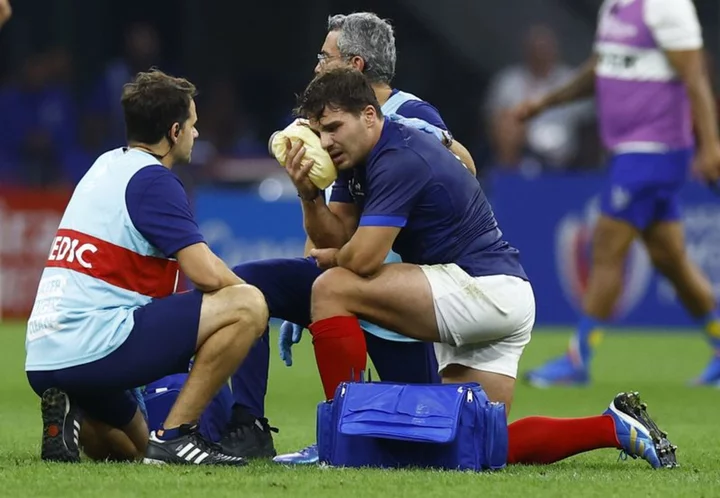
Rugby-Recovering Dupont on course for France's World Cup quarter-final
Antoine Dupont's recovery from surgery on a broken cheekbone is going very well and it may not be
1970-01-01 08:00
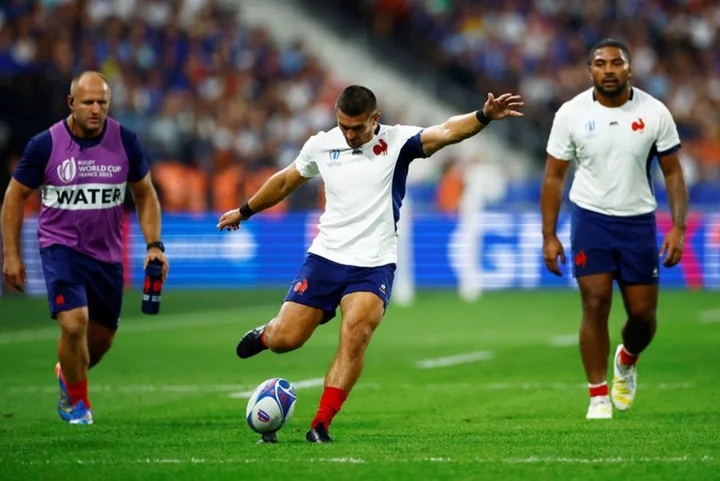
Rugby-Kickers worth their weight in gold at Rugby World Cup
By Nick Said MARSEILLE, France Every Rugby World Cup has been won by a nation with a strong
1970-01-01 08:00
